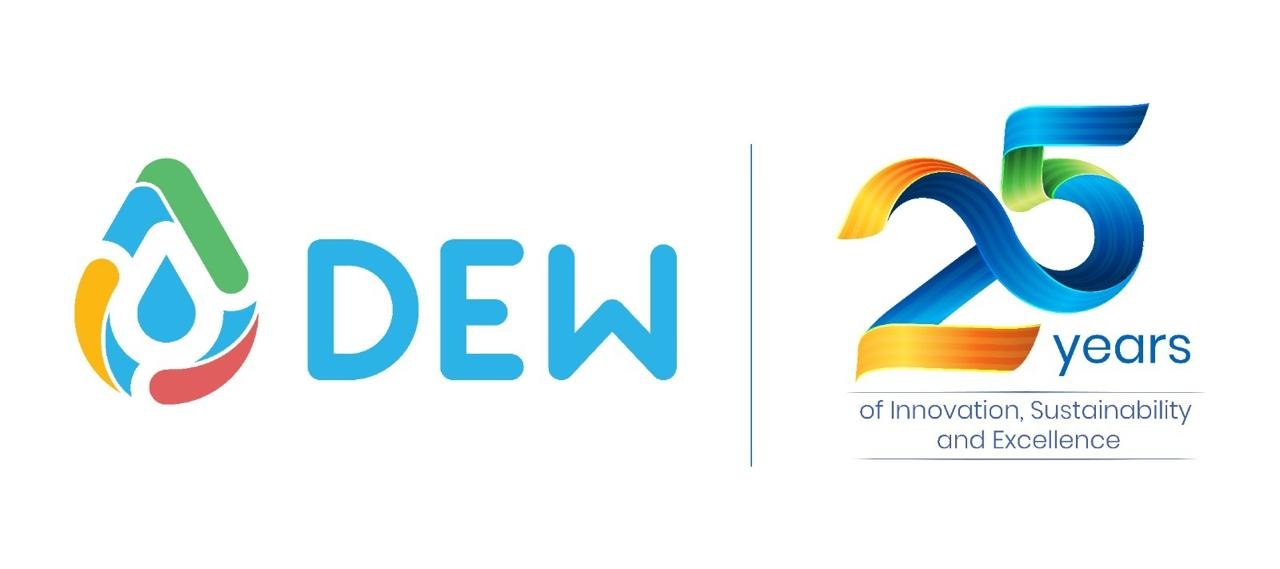Dissolved Air Flotation (DAF) is a process for the removal of fine suspended material from an aqueous suspension. The term “flotation” indicates something floated on or at the surface of a liquid.
The DAF provides the energy for effective flotation in the form of extremely fine air bubbles, which become attached to the suspended material to be removed. This attachment of bubbles to the particle “reduces” the density of the particle resulting in increased buoyancy, thus effecting flotation. Chemical conditioning is often used to increase the effectiveness of the dissolved air flotation process.
The most reliable and positive method of producing bubbles of the proper size is to dissolve air into water under pressure and to then reduce the pressure of the solution. As the pressure is reduced, the air comes out of solution in the form of micro bubbles.
Dew Dissolved Air Flotation Clarifier is suited for wastewater streams containing solids, oils, and greases, which are difficult to settle or have a tendency to float. With proper chemical conditioning we remove colloidal and emulsified materials. Complete pretreatment systems can be supplied.
- High rate design
- High removal efficiency
- Meet effluent discharge requirements
- Recovering suspended material
- Reclaiming water for reuse
- Thickening of slurries and sludges
The Dew Dissolved Air Flotation Clarifier is designed for the removal of suspended solids or water immiscible liquids from process or wastewater to produce an effluent of high clarity and free of objectionable particles or liquid. Dissolved air flotation is best applied to remove materials that normally settle slowly, persist by remaining in suspension, or have a tendency to float.
DAF APPLICATION
- Clarification of a wastewater stream
- Reduction of TSS, COD, and BOD to meet effluent discharge limits
- Recovery of suspended material
- Reclaiming water for reuse
- Thickening of slurries and sludges
Design Parameters
There are, however, several key design parameters which are commonly applied when considering and assessing the design of a DAF system. The parameters listed below are, where applicable, accompanied by design figures.
Air : Solids Ratio
The Air : Solids (A:S) ratio may be reported as a volume:mass ratio or a mass:mass ratio and will be application specific. To give an idea of the range of A:S ratios commonly applied, typical values range between 0.005 – 0.06 ml/mg which, at 20oC and atmospheric pressure (say 1.0133 bar) is equivalent to 0.006 mg – 0.072 mg of air per mg of solids to be removed.
Hydraulic Loading Rate
The DAF hydraulic loading rate is a measurement of the volume of effluent applied per unit effective surface area per unit time.
Typical Solids Loadings
Typical figures encountered range from around 2 kg/m2.h up to15 kg/m2.h, although again the design will be application specific, depending on the nature of the solids to be removed and the extent to which chemical aids are used.
Recycle Ratio
The recycle ratio can vary immensely with recycle ratios being typically 15-50% for water and wastewater treatment application. However, for activated sludge flotation thickening, up to 150-200% recycle rates have been applied.
Saturation of Effluent
The production of saturated water from which the micro-bubbles are generated is normally achieved in two ways. The first which is common to potable water treatment involves passing the required flow of treated effluent through a packed bed system which is pressurised using a pump which is often a centrifugal pump. In systems where solids are likely to be encountered, e.g. sludge treatment, the saturation vessel is likely to be empty to prevent the fouling of any packing materials. The percentage of saturation which can be achieved will depend on the design of the system but, with good design, saturation efficiencies of up to 80-95% can be expected.
Flow Regime
To ensure that DAF systems operate as designed it is important to ensure that the system does not encounter sudden changes in the flow regime. For this reason some form of flow balancing or regulation is recommended to ensure a consistent flow rate.

